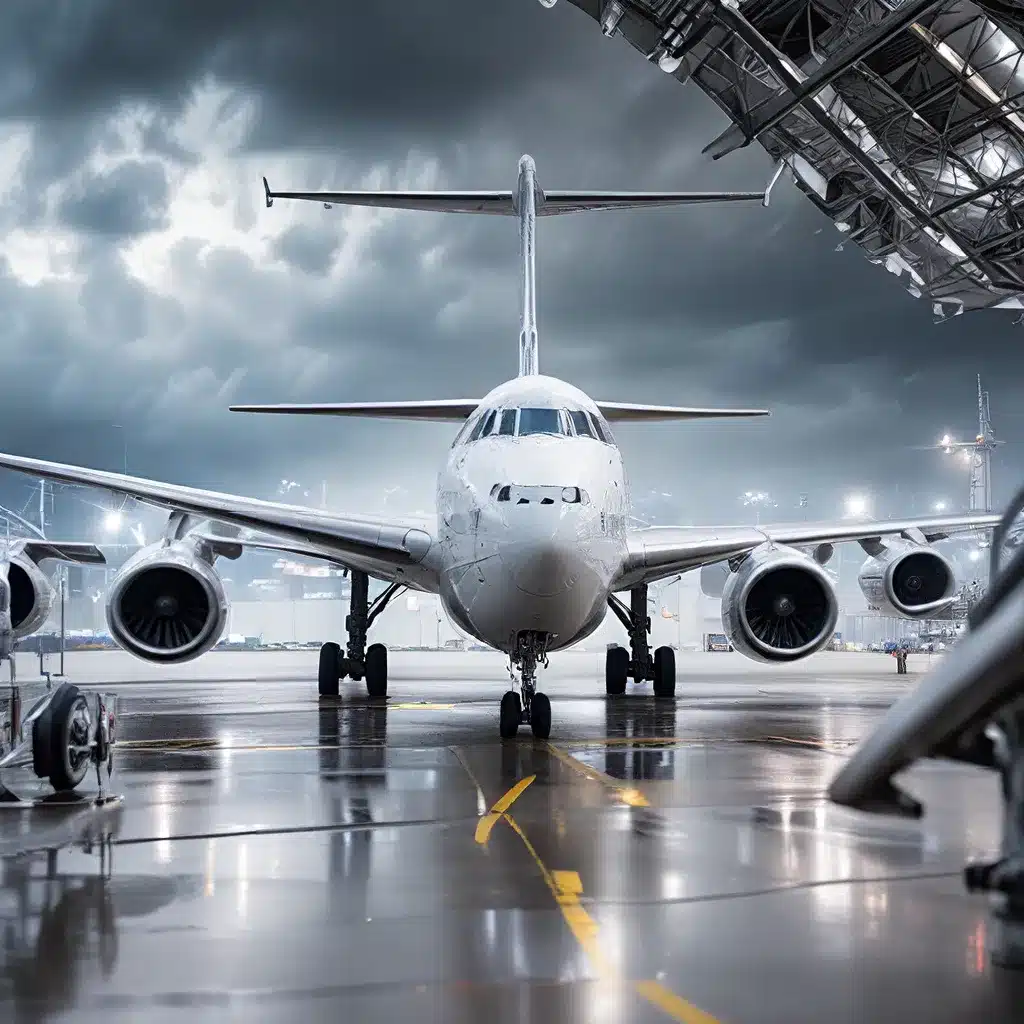
The Evolving Landscape of Asset Maintenance Management
In the dynamic and fast-paced world of aerospace manufacturing and operations, the ability to maintain a reliable and efficient fleet of aircraft is paramount. Companies in this industry face a myriad of challenges, from managing complex and aging assets to navigating supply chain disruptions, cybersecurity risks, and skills shortages. Amidst these obstacles, there is a growing emphasis on enhancing sustainability and compliance with evolving regulations.
To address these challenges, the aerospace industry is increasingly turning to innovative sensor network technologies and Internet of Things (IoT) applications. By leveraging the power of data-driven insights and advanced analytics, companies can optimize their asset maintenance strategies, improve fleet availability, and drive sustainable business operations.
Sensor Networks for Predictive Maintenance
At the heart of this transformation lies the concept of predictive maintenance, which leverages sensor data and machine learning algorithms to anticipate equipment failures before they occur. Unlike traditional reactive or preventive maintenance approaches, predictive maintenance enables proactive interventions, minimizing unplanned downtime and maximizing asset uptime.
The integration of sensor networks into the aerospace supply chain is a critical enabler of this predictive maintenance paradigm. Sensors installed on aircraft and ground infrastructure can continuously monitor a wide range of parameters, such as vibration, temperature, pressure, and even environmental conditions. This data is then aggregated and analyzed using advanced data analytics and artificial intelligence (AI) techniques to identify patterns and anomalies that may indicate an impending failure.
Research has shown that by leveraging sensor data and predictive analytics, aerospace companies can optimize in-service fleet availability, reduce mean time to recovery, and improve asset reliability and supply chain availability. This not only enhances customer satisfaction and business continuity but also drives significant cost savings by minimizing unplanned maintenance and downtime.
IoT Applications for Aerospace Operations
Beyond predictive maintenance, the IoT is revolutionizing the way aerospace companies manage their operations and supply chain. Connected sensors and smart devices enable real-time monitoring and control of various assets, from aircraft to ground support equipment and facilities.
One compelling example is Skywise, an aircraft data platform developed by Airbus. Skywise integrates in-flight engineering and operational data, providing airlines with a comprehensive, data-driven platform to address aircraft operations challenges. By combining Airbus’ expertise with advanced data analytics and AI from Palantir Technologies, Skywise empowers operators to make sustainable decisions on their operations, optimize fleet performance, and enhance aircraft dispatch reliability.
Skywise Core X, the latest iteration of the platform, offers a range of digital solutions aimed at reducing unplanned maintenance and its associated costs. Features like Predictive Maintenance, Health Monitoring, and Fleet Reliability allow airlines to anticipate component failures, identify priority issues, and improve overall fleet reliability.
Enhancing Sensor Network Security
As sensor networks and IoT systems become more pervasive in the aerospace industry, the importance of cybersecurity cannot be overstated. These interconnected systems are vulnerable to a range of threats, from hacking and data breaches to malware and denial-of-service attacks. Compromised sensor networks can not only disrupt critical operations but also jeopardize the safety and security of aircraft and passengers.
To mitigate these risks, aerospace companies must adopt a comprehensive security framework that addresses the unique challenges of sensor network architectures. This includes implementing robust access controls, encryption protocols, secure data transmission, and anomaly detection mechanisms. Regular vulnerability assessments and penetration testing are also essential to identify and address potential weaknesses in the system.
Moreover, the integration of blockchain technology has emerged as a promising approach to enhancing the security and traceability of sensor data within the aerospace supply chain. By leveraging the decentralized and tamper-resistant properties of blockchain, companies can ensure the integrity and provenance of critical maintenance data, fostering greater trust and transparency across the ecosystem.
Energy Management and Sustainability
As the aerospace industry strives to reduce its environmental impact, the optimization of energy consumption within sensor networks and IoT systems has become a critical consideration. Energy-efficient sensor designs, low-power communication protocols, and intelligent power management strategies are crucial for minimizing the carbon footprint of these technologies.
Renewable energy sources, such as solar or wind-powered sensors, can further contribute to the sustainability of sensor network deployments, particularly in remote or off-grid locations. Additionally, edge computing and fog computing architectures can help reduce the energy demands of data transmission by processing and analyzing data closer to the source, thereby minimizing the need for long-haul data transfers.
By aligning sensor network design and IoT applications with sustainability objectives, aerospace companies can not only enhance their environmental stewardship but also improve the overall cost-effectiveness and resilience of their operations.
Embracing the Future of Sensor Networks in Aerospace
As the aerospace industry continues to navigate the challenges of the modern business landscape, the strategic deployment of sensor networks and IoT technologies has emerged as a transformative force. By leveraging the power of predictive maintenance, data-driven decision-making, and sustainable operations, companies can optimize their asset management, improve fleet availability, and ensure the long-term viability of their operations.
Ultimately, the integration of sensor networks into the aerospace supply chain represents a crucial step towards a more reliable, efficient, and environmentally conscious future. By embracing these innovative technologies, the aerospace industry can stay ahead of the curve, enhance customer satisfaction, and solidify its position as a leader in the global marketplace.